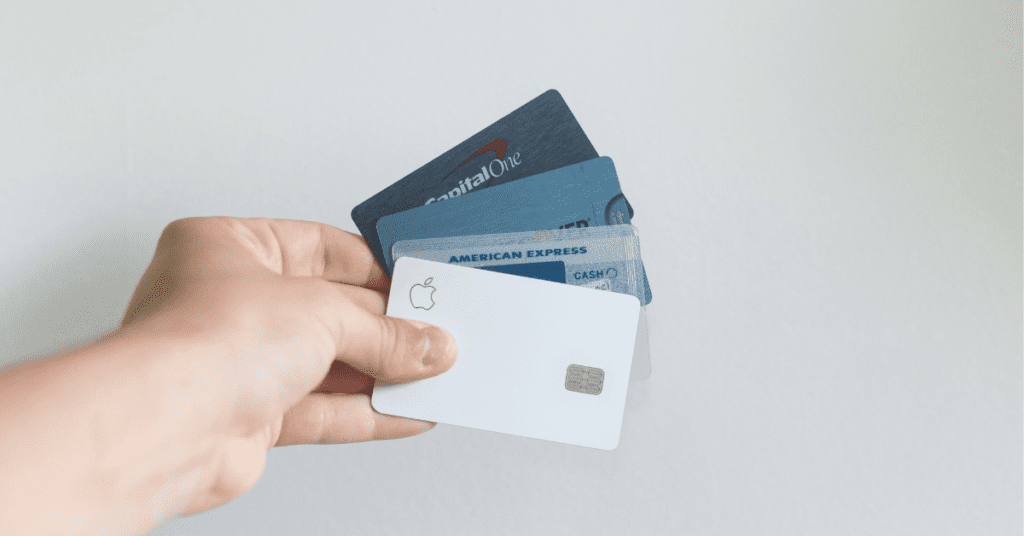

Top Apps for Wealth Management and Budgeting in 2025: A Comprehensive Guide
Introduction: Why Wealth Management Matters More Than Ever in 2025
Effective wealth management is the cornerstone of financial success, especially in today’s fast-paced digital age. With the growing availability of sophisticated financial tools and apps, managing wealth has become more accessible. Whether you’re tracking expenses, building an emergency fund, planning investments, or preparing for retirement, the right apps can transform your financial strategy.
This article covers the top wealth management and budgeting apps in 2025, focusing on tools that integrate advanced features like AI-driven insights, real-time expense tracking, and automated investment solutions. We’ll also highlight high-value keywords and actionable tips to optimize your financial journey.
Why You Need Financial Apps for Wealth Management
Traditional Budgeting vs. Digital Tools: Which is Better for Managing Your Finances?
Managing finances effectively is a cornerstone of achieving financial freedom. While traditional budgeting methods have long been the go-to solution, digital tools have emerged as a powerful alternative. Here’s a detailed comparison of both approaches to help you decide what fits your needs best.
Traditional Budgeting
Traditional budgeting involves manual methods like:
- Pen and Paper: Writing down income, expenses, and savings on notebooks or ledgers.
- Spreadsheets: Using tools like Excel or Google Sheets for detailed expense tracking and planning.
Advantages
- Full Control: Provides hands-on involvement, helping you understand your finances deeply.
- Customizable: Spreadsheets allow flexibility in designing budget layouts.
- Offline Accessibility: Requires no internet or external software.
Disadvantages
- Time-Consuming: Requires manual data entry, which can be tedious.
- Error-Prone: Mistakes in calculations or oversight in expenses can occur.
- Limited Analytics: Offers fewer insights into spending patterns compared to advanced tools.
Digital Tools for Budgeting
Digital budgeting tools include apps and software like Mint, YNAB (You Need A Budget), and PocketGuard.
Advantages
- Automation: Syncs with bank accounts to track income and expenses automatically.
- Insights and Analytics: Provides visualizations and breakdowns of spending habits.
- Goal Setting: Many tools have features to set and monitor financial goals.
- Notifications: Sends reminders for bill payments or alerts for overspending.
- Accessibility: Available on smartphones, making budgeting portable and easy to access anytime.
Disadvantages
- Learning Curve: Some tools can be complex to set up and navigate.
- Security Concerns: Storing sensitive financial data on third-party platforms may be risky.
- Subscription Costs: Many advanced tools come with monthly or annual fees.
Comparison Table
| Feature | Traditional Budgeting | Digital Tools |
|---|---|---|
| Ease of Use | Manual and time-intensive | Quick and automated |
| Cost | Free or minimal (paper) | Free options; paid subscriptions for advanced features |
| Security | No external risks | Potential data security concerns |
| Insights | Basic | Advanced analytics and visual reports |
| Customization | High | Limited to app functionalities |
Which Should You Choose?
- Traditional Budgeting: Ideal for those who prefer hands-on management, enjoy working with spreadsheets, or want to avoid technology.
- Digital Tools: Best for tech-savvy users who value automation, advanced analytics, and convenience.
For a hybrid approach, consider combining both methods: Use spreadsheets for long-term planning and digital tools for daily expense tracking. This way, you get the best of both worlds while managing your finances efficiently.
The Top Wealth Management and Budgeting Apps in 2025
Let’s dive into the most effective apps, detailing their unique features, strengths, and how they cater to diverse financial needs.
1. Mint: A Classic Choice for All-Inclusive Budgeting
Key Features:
- Real-Time Expense Tracking: Automatically categorize expenses from connected accounts.
- Goal Setting: Helps you set savings targets and track your progress.
- Subscription Tracking: Identify unused subscriptions to reduce wasteful spending.
User Scenario:
Consider Mark, a freelance designer, who was struggling with irregular income. By using Mint, he gained clarity on his cash flow and saved 20% of his income for taxes and investments.
2. Personal Capital: For Serious Investors
Key Features:
- Net Worth Tracker: Displays assets, liabilities, and investment growth in real-time.
- Retirement Planner: Uses advanced algorithms to project retirement savings.
- Fee Analyzer: Identifies and reduces hidden investment fees.
Case Study:
Lisa, an entrepreneur, optimized her portfolio by 15% using Personal Capital’s fee analyzer, saving her thousands in potential losses over a decade.
3. YNAB (You Need A Budget): Building Financial Discipline
Advanced Features:
- Proactive Budgeting: Every dollar is allocated a job, ensuring financial efficiency.
- Debt Payoff Strategies: Helps users pay off debt faster with structured plans.
- Educational Content: Workshops and tutorials enhance users’ financial knowledge.
4. Acorns: Start Investing With Your Spare Change
Unique Selling Points:
- Round-Up Investments: Turns small purchases into automated investments.
- Customizable Portfolios: Choose risk levels to align with your financial goals.
- Retirement Accounts: Includes options for IRAs to maximize tax savings.
Example Success:
Over three years, Acorns helped Alex, a college graduate, accumulate $15,000 in savings with minimal effort.
5. PocketGuard: Simplified Budgeting for Everyday Use
Highlights:
- In My Pocket: Displays disposable income after accounting for bills and goals.
- Spending Reports: Visualizes spending patterns to identify cost-saving opportunities.
- Bill Negotiation: Helps negotiate lower rates for utility bills.
6. Robinhood: Simplified Stock Trading and Cryptocurrency Investment
Features:
- Commission-Free Trading: Trade stocks, ETFs, and cryptocurrencies without fees.
- Cash Management: Offers high-yield savings accounts for idle cash.
- Educational Resources: Guides new investors in understanding market dynamics.
Advanced Features That Set Financial Apps Apart
The competition among financial apps has driven innovation, resulting in some unique features that are shaping how users manage wealth. Let’s explore these advanced functionalities in detail:
1. AI-Driven Budget Optimization
Many apps now leverage artificial intelligence (AI) to analyze spending patterns, forecast cash flow, and recommend personalized budgeting strategies.
- Example: Apps like Mint and YNAB use machine learning algorithms to notify users about potential overspending before it occurs.
2. Real-Time Notifications
Stay ahead of your financial obligations with instant notifications:
- Payment due reminders.
- Alerts on low account balances.
- Insights into unexpected account charges.
3. Multi-Currency Support
For global professionals, apps like Personal Capital and Revolut enable seamless multi-currency tracking and conversion, ideal for managing finances while traveling.
4. Tax Integration Features
- Automated tax deductions tracking.
- Investment-related tax optimization tools.
- Tax filing support integrated directly into platforms like TurboTax.
Real-World Success Stories: The Impact of Financial Apps
Case Study 1: Reducing Debt with YNAB
- Jessica, a teacher with $20,000 in credit card debt, used YNAB’s proactive budgeting features to repay her debt within three years. By assigning every dollar a purpose, she achieved financial freedom.
Case Study 2: Growing Savings with Acorns
- By investing her spare change, Sarah, a college student, saved $12,000 over five years. She leveraged Acorns’ round-up feature alongside their educational tools to invest wisely.
Case Study 3: Retirement Planning with Personal Capital
- Mike, a 45-year-old marketing executive, gained clarity on his retirement goals using Personal Capital’s Retirement Planner. The platform’s projections showed him how small adjustments could add $200,000 to his retirement savings.
Emerging Trends in Wealth Management Tools
AI and Automation
- Predictive analytics for investment planning.
- Smart reminders for bill payments and savings contributions.
Blockchain Integration
- Enhanced security for financial transactions.
- Decentralized finance apps gaining popularity.
Sustainable Investing Apps
- Tools like Betterment now offer ESG-focused investment options.
- Long-tail keywords: “How to invest in sustainable funds” and “Best apps for ESG investing.”
Comprehensive Comparison of All Apps
| Feature | Mint | Personal Capital | YNAB | Acorns | PocketGuard | Robinhood |
|---|---|---|---|---|---|---|
| Expense Tracking | Yes | Limited | Yes | No | Yes | No |
| Investment Management | Limited | Yes | No | Yes | No | Yes |
| Retirement Planning | No | Yes | No | Yes | No | No |
| Automation | Yes | Yes | No | Yes | Yes | Yes |
| Fee-Free Use | Yes | Limited | No | No | Yes | Yes |
Building Financial Resilience with the Right Apps
Actionable Tips:
- Combine Multiple Apps: Use Mint for expense tracking, YNAB for budgeting, and Robinhood for investments.
- Prioritize Security: Look for apps with strong encryption and multi-factor authentication.
- Leverage Free Tools: Start with free apps before committing to premium features.
Practical Steps to Maximize the Benefits of Wealth Apps
Step 1: Choose the Right App for Your Needs
- Compare features like expense tracking, investment tools, and tax integration.
- Test free trials before committing to premium versions.
Step 2: Integrate Apps with Your Bank Accounts
- Ensure that the app securely syncs with all financial accounts.
- Use apps with encryption and multi-factor authentication for data protection.
Step 3: Set Financial Goals
- Use goal-setting features for savings, debt repayment, and retirement.
- Track progress monthly to stay on target.
Step 4: Regularly Review Financial Insights
- Pay attention to trends and adjust budgets or investments as needed.
- Use visualization tools like graphs to understand your net worth growth.
The Role of Apps in Achieving Financial Independence
Achieving financial independence, particularly for those following the FIRE (Financial Independence, Retire Early) movement, requires careful planning, diligent tracking, and strategic investing. Modern apps simplify this journey by offering tools that streamline budgeting, savings, and investment processes.
Budgeting and Saving Apps for FIRE Enthusiasts
Budgeting forms the backbone of financial independence. Apps like YNAB (You Need A Budget) and Mint are tailored to help users maximize their savings rates—a core principle of FIRE.
YNAB (You Need A Budget)
- Zero-Based Budgeting: Ensures every dollar has a purpose, encouraging disciplined spending and saving.
- Goal Tracking: Allows users to set and monitor financial goals, such as building an emergency fund or achieving a specific savings rate.
- Educational Features: Offers workshops and tutorials to empower users with financial literacy.
Mint
- Expense Categorization: Automatically tracks and categorizes spending, offering insights into areas where savings can be optimized.
- Bill Alerts: Helps users avoid late fees and manage recurring expenses effectively.
- Net Worth Tracking: A crucial feature for FIRE enthusiasts to gauge progress toward financial independence.
Investment Apps for Building Wealth
Once budgeting and saving are in place, investing becomes the next critical step in achieving FIRE. Apps like Robinhood and Acorns cater to long-term investors looking to grow their wealth systematically.
Robinhood
- Commission-Free Trading: Lowers barriers to investing in stocks, ETFs, and other securities.
- Fractional Shares: Enables investing in high-value stocks without requiring significant upfront capital.
- Customizable Portfolios: Users can align investments with FIRE-focused strategies, such as investing in low-cost index funds.
Acorns
- Round-Up Savings: Automatically invests spare change from daily purchases, making investing effortless.
- Portfolio Diversification: Offers pre-designed portfolios based on individual risk tolerance and long-term goals.
- Recurring Investments: Encourages disciplined investing with automated contributions.
How Apps Simplify the FIRE Journey
- Tracking Savings Rate: Apps like YNAB and Mint make it easier to calculate and optimize the savings rate—a key metric for FIRE enthusiasts.
- Automation: Tools like Acorns automate savings and investments, reducing the need for manual effort.
- Monitoring Progress: Net worth tracking features in budgeting apps provide a clear picture of how close users are to achieving financial independence.
- Access to Resources: Many apps offer educational content, helping users make informed financial decisions.
FAQs About Wealth Management Apps
1. Are Financial Apps Safe to Use?
- Most modern apps are equipped with bank-level encryption and multi-factor authentication to protect user data.
2. Which App Is Best for Beginners?
- Mint is a great starting point for those new to budgeting, thanks to its user-friendly interface and comprehensive features.
3. Can Apps Replace Financial Advisors?
- While apps provide excellent insights and automation, they may not replace the expertise of a human financial advisor for complex scenarios like estate planning or tax optimization.
In conclusion,
as we look ahead to 2025, the wealth management and investing landscape is rapidly transforming. Emerging technologies, such as AI-driven advisory services and asset tokenization, are reshaping how investors approach wealth creation. With the increasing wealth transfer from Baby Boomers to Gen X and Millennials, there is a significant opportunity for firms to adapt by integrating seamless digital tools and offering personalized investment strategies.
Additionally, wealth management tools like Mint, Personal Capital, and Acorns continue to gain traction, providing users with practical ways to manage their finances, track investments, and save for retirement. By embracing these cutting-edge solutions, investors can optimize their portfolios, minimize risks, and achieve long-term financial goals.
Moreover, with the rise of alternative investments and the growing interest in sustainable and impact investing, 2025 promises to be a pivotal year for those looking to diversify their financial strategies. Wealth management firms that leverage data, integrate AI, and adapt to evolving consumer needs will be poised to thrive in this digital-first world.
To succeed in wealth management in 2025, it’s critical to stay informed and adopt the right tools that align with your financial objectives. By strategically implementing the latest technologies and investment practices, you can build a solid foundation for wealth accumulation and ensure financial security in the years ahead.
Investing in high-quality financial tools, understanding the importance of AI in investment strategies, and preparing for the future of asset tokenization are key to long-term wealth management success. Keep evolving, stay ahead of the curve, and make informed decisions to build a prosperous future.


Hasnain Aslam is a seasoned finance blogger and digital marketing strategist with a strong expertise in SEO, content marketing, and business growth strategies. With years of experience helping entrepreneurs and businesses boost their online presence and maximize organic traffic, he specializes in crafting high-impact content that ranks on search engines and drives real results. His insights empower professionals to build sustainable digital success through strategic marketing and innovative SEO techniques.


